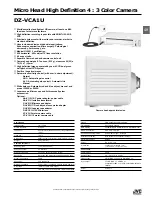
MATRIX ORBITAL
9
Phone: 403.229.2737
Getting Started
When connecting your HTT display, power must first be applied through the barrel jack or optional
Micro MATE-N-LOK header. Once powered, connect the HTT to your source HDMI cable.
Windows
When connected to Windows, the HTT’s resolution will be automatically detected and set through the
on-board EDID. The HTT display should immediately appear in display settings. No additional software
setup will be required.
Raspberry Pi
Some setup will be required before the display can be used with a Raspberry Pi unit. The HDMI
resolution will have to be configured through the config.txt file (located in /boot/config.txt).
The following modifications can be made to the Raspberry Pi’s config.txt file, forcing the HTT’s
resolution settings:
#Set the Monitor mode to DMT.
hdmi_group=2
#Use a custom resolution.
hdmi_mode=87
#Use an 800 x 480 resolution @ 60Hz
hdmi_cvt= 800 480 60 6 0 0 0
#Deliver max current through USB
Max_usb_current=1
The configuration lines listed above will configure the Raspberry Pi to drive an 800 x 480 display at 60Hz.
TinkerBoard
The HTT will be compatible with TinkerOS-Debian. Once connected, the Tinkerboard will autodetect the
HTT’s display settings. No further software configuration is required.
The HTT is not fully compatible with TinkerOS-Android Marshmallow.
BeagleBone
The BeagleBone board will autodetect the HTT’s EDID display settings automatically. No further
software configuration is required.







































